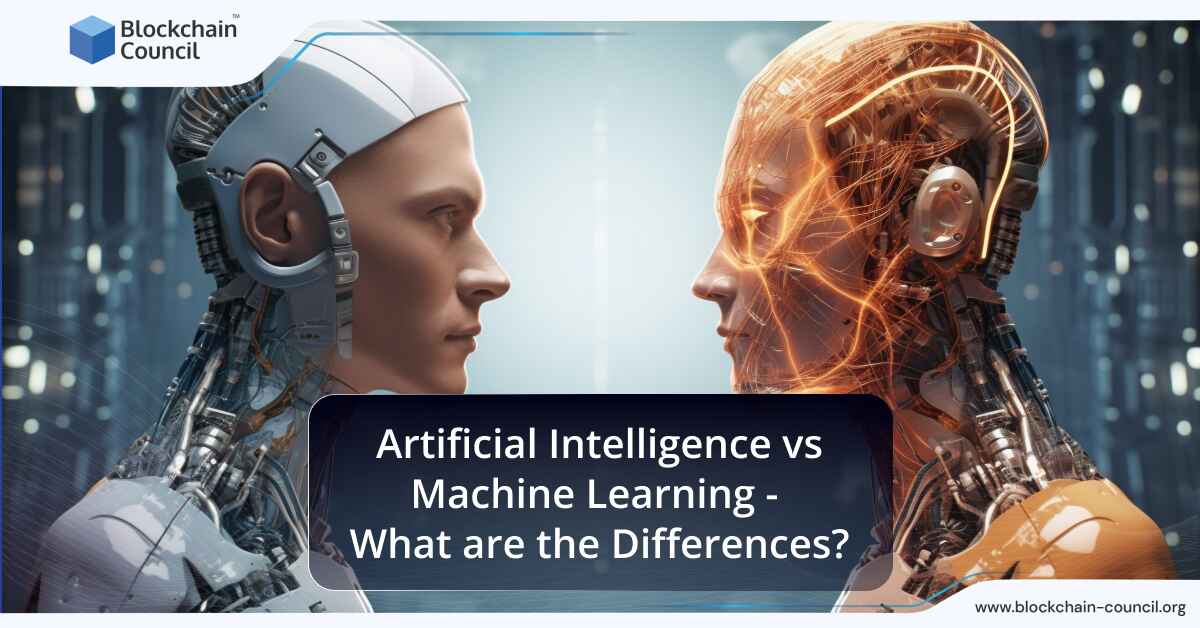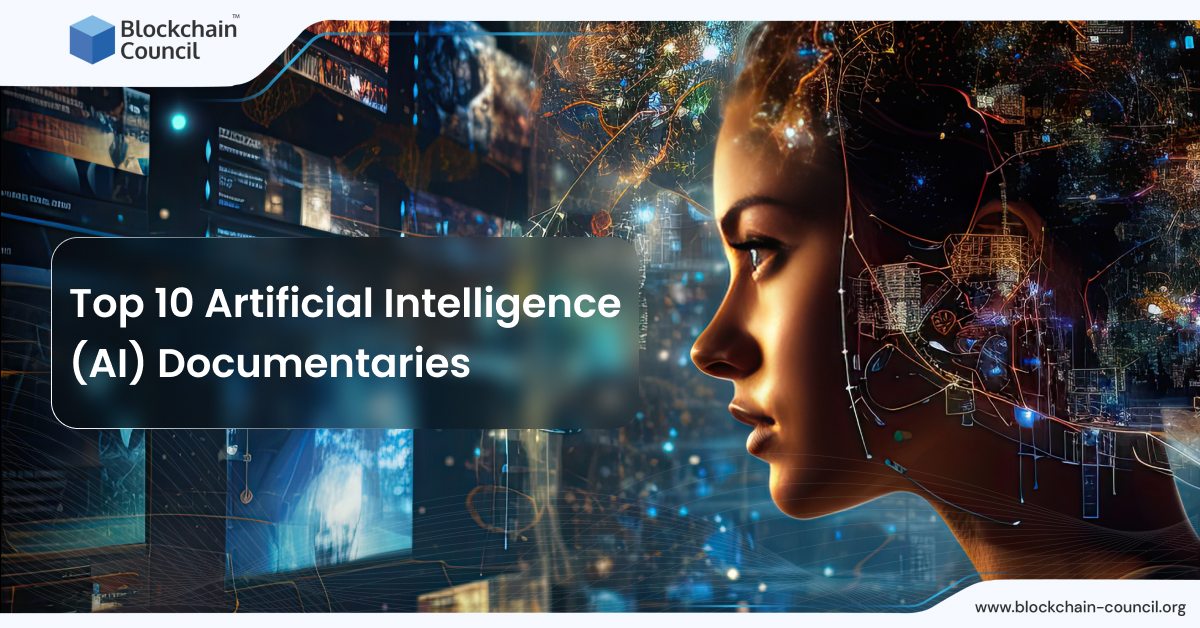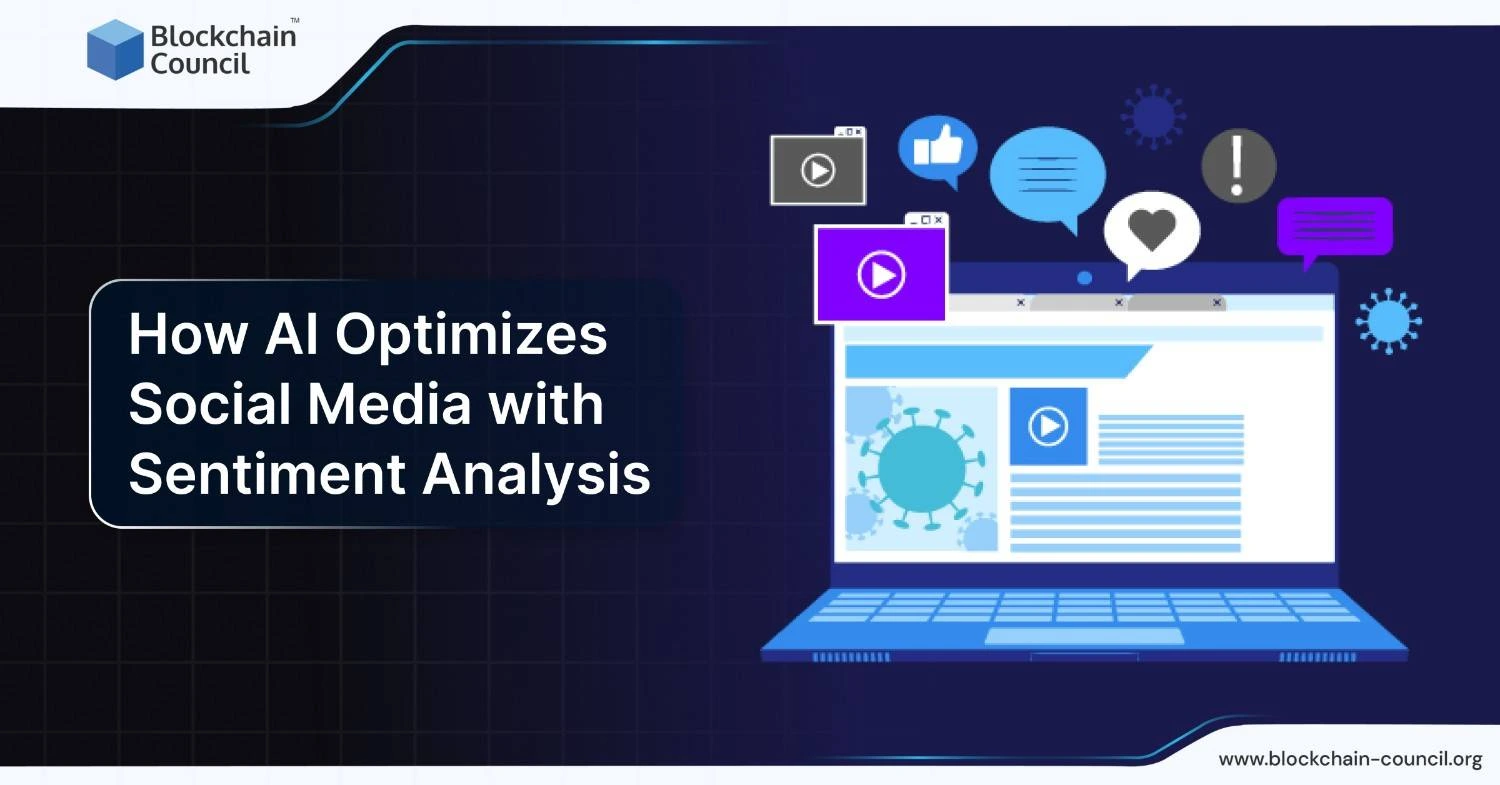
- Blockchain Council
- September 13, 2024
In an age where technology seamlessly integrates into our daily lives, Artificial Narrow Intelligence (ANI) stands out as a pivotal innovation, shaping the way we live, work, and interact with the world around us. ANI, often referred to as Weak AI, is the type of artificial intelligence that excels in performing a single task or a limited range of tasks with incredible accuracy and efficiency. From the voice assistant that greets us in the morning to the navigation systems that guide us through bustling city streets, ANI technologies are ubiquitous, demonstrating the profound impact of AI on modern society.
In this detailed guide, we’ll delve into the world of ANI, exploring its definition, applications, limitations, and the promising trends shaping its future. Whether you’re curious about the voice assistant that wakes you up in the morning or the recommendation system suggesting your next movie, ANI is at the heart of these innovations, and this article is your gateway to understanding it better.
What Is Artificial Narrow Intelligence (ANI)?
As stated above, Artificial Narrow Intelligence (ANI), also known as Weak AI, represents a pivotal concept within this domain. ANI refers to a type of AI that is designed and trained to perform a specific task or a set of tasks with a defined scope. Unlike its more advanced counterparts, ANI lacks consciousness, self-awareness, and the ability to perform beyond its programmed capabilities.
Artificial Narrow Intelligence is the stage of artificial intelligence development where machines can only perform a narrowly defined set of tasks at a level of competence comparable to, or surpassing, that of a human. This form of AI operates under a constrained set of parameters and does not possess the ability to understand or learn anything beyond its initial programming. Examples of ANI are prevalent in our daily lives, from voice assistants like Siri and Alexa to recommendation systems on Netflix and Amazon.
How ANI Differs from Artificial General Intelligence (AGI) and Artificial Super Intelligence (ASI)
To clarify the distinctions between ANI, AGI, and ASI, a comparative analysis is presented in the following table:
| Feature | Artificial Narrow Intelligence (ANI) | Artificial General Intelligence (AGI) | Artificial Super Intelligence (ASI) |
| Definition | AI systems that excel in a specific task or limited range of tasks. | AI with the ability to understand, learn, and apply knowledge across a wide range of tasks, at a level comparable to a human. | AI that surpasses human intelligence and capability across all fields, including creative, emotional, and social intelligence. |
| Capabilities | Specialized and limited to predefined tasks. | General and adaptable across a broad spectrum of tasks. | Superior in every aspect, capable of outperforming the best human minds in every discipline. |
| Consciousness | No consciousness or self-awareness. | Potentially could achieve a form of consciousness or self-awareness. | Likely to possess consciousness, self-awareness, and possibly desires or intentions. |
| Examples | Speech recognition, facial recognition, customer service chatbots. | Theoretical constructs, not yet achieved. | Theoretical constructs, represents a future possibility beyond current AI. |
| Development Stage | Currently available and widely implemented. | Under research and development, not yet realized. | A hypothetical future stage of AI development. |
How Does ANI Work?
At its core, ANI is grounded in the concept of machine learning (ML), where algorithms are trained to make decisions or predictions based on data. This training involves feeding large datasets to the algorithm, allowing it to learn and improve over time. The process is akin to teaching a child through repeated examples, where the algorithm, through exposure to various scenarios within its defined domain, refines its ability to respond accurately to inputs.
Key to ANI’s functionality is its focus on a singular or a limited set of tasks. This specialization enables ANI systems to excel within their domain, whether it be language translation, image recognition, or predictive analytics. The narrow focus allows these systems to operate with a high degree of precision, leveraging specific features and patterns relevant to their tasks.
Types of Algorithms and Technologies That Power ANI
ANI is powered by a diverse array of algorithms and technologies, each suited to different types of tasks and challenges:
- Supervised Learning: This is one of the most common approaches in ANI, where the algorithm is trained on a labeled dataset. It learns to predict outcomes or categorize data based on examples where the input and the desired output are provided. Applications range from email spam filters to speech recognition systems.
- Unsupervised Learning: In contrast, unsupervised learning algorithms are used when the data has no labels. These algorithms identify patterns or structures within the data, useful in clustering and association tasks such as customer segmentation in marketing.
- Reinforcement Learning: This approach involves algorithms learning to make decisions through trial and error, receiving rewards for positive actions. It’s particularly useful in dynamic environments that require adaptive behavior, such as in autonomous vehicles or game-playing AI.
- Deep Learning: A subset of machine learning, deep learning uses neural networks with multiple layers (hence “deep”) to analyze vast amounts of data. It is the technology behind the most advanced ANI applications today, including natural language processing (NLP) and complex image recognition tasks.
- Natural Language Processing (NLP): NLP technologies enable ANI systems to understand, interpret, and generate human language. From chatbots to translation services, NLP is crucial for creating interfaces that can interact naturally with users.
- Computer Vision: ANI systems equipped with computer vision capabilities can interpret and understand the visual world. This technology powers facial recognition systems, medical imaging analysis, and even the filters on social media platforms.
Each of these technologies plays a critical role in enabling ANI systems to perform their designated tasks with remarkable efficiency. By leveraging the strengths of these algorithms, ANI systems can automate complex processes, enhance decision-making, and provide insights that would be unattainable through human analysis alone.
The Benefits of Using ANI
- Healthcare: In the healthcare sector, ANI is a game-changer. It supports diagnostic procedures, patient monitoring, and personalized treatment plans, significantly improving patient outcomes. For instance, ANI-powered diagnostic tools can analyze medical images with precision surpassing human capabilities, enabling early detection of diseases such as cancer. Furthermore, ANI-driven predictive analytics help in forecasting disease outbreaks, optimizing resource allocation, and managing public health crises more effectively.
- Finance: The finance industry benefits from ANI through enhanced security, fraud detection, and automated customer service. ANI algorithms analyze transaction patterns to identify potential fraud, reducing financial losses. Moreover, personalized investment advice generated by ANI systems can cater to individual financial goals, democratizing access to wealth management services.
- Customer Service: ANI transforms customer service by powering chatbots and virtual assistants that provide quick, 24/7 support. These systems offer personalized assistance, handle routine inquiries efficiently, and free up human agents to tackle more complex issues. The result is improved customer satisfaction and loyalty.
- Efficiency Improvement: One of the hallmark benefits of ANI is its ability to streamline operations. By automating routine tasks, ANI allows organizations to focus their human resources on more strategic activities. This not only speeds up processes but also reduces operational costs, driving overall efficiency.
- Error Reduction: ANI systems, with their ability to process and analyze vast amounts of data with precision, significantly reduce the margin of error in tasks such as data entry, calculations, and even complex diagnostics. This accuracy is invaluable in high-stakes environments like healthcare and finance, where errors can have serious consequences.
- Personalized Experiences: ANI enables the delivery of personalized experiences, whether through tailored product recommendations in retail, customized content in media, or individualized learning paths in education. By understanding and predicting user preferences and behaviors, ANI creates more engaging and satisfying experiences.
- Scalability: With ANI, businesses can scale their operations more effectively. ANI systems can handle increasing volumes of work without the need for proportional increases in human labor. This scalability supports business growth and market adaptation with greater agility.
- Innovation and New Opportunities: Finally, ANI is a catalyst for innovation. By automating the routine, it frees up human creativity for problem-solving and innovation. Moreover, ANI can identify patterns and opportunities that humans might overlook, leading to new products, services, and ways of working.
Examples of ANI in Everyday Life
Artificial Narrow Intelligence (ANI) seamlessly integrates into our daily lives, often without us realizing the extent of its influence. From simplifying tasks to personalizing experiences, ANI technologies are pivotal in shaping our interaction with the digital world. This section explores real-world applications of ANI, highlighting how these technologies enhance convenience, efficiency, and personalization in various aspects of our daily routines.
Voice Assistants: Revolutionizing Interaction
Voice assistants, such as Amazon’s Alexa, Apple’s Siri, and Google Assistant, are quintessential examples of ANI in action. These AI-powered tools understand and process natural language, respond to queries, and perform tasks like setting reminders, playing music, or providing weather updates. What makes them remarkable is their ability to learn from interactions to provide more accurate responses over time, showcasing the adaptive nature of ANI technologies.
Case Study: Smart Home Integration
- Imagine a scenario where you’re running late for a meeting. With a simple voice command, your assistant not only sends a message to your colleagues but also adjusts your home’s thermostat and locks the doors as you rush out. This level of automation and personalization is made possible by ANI, which powers the voice recognition and processing capabilities of these assistants.
Recommendation Systems: Personalizing Experiences
Online platforms like Netflix, Spotify, and Amazon use ANI to curate personalized recommendations. These systems analyze your past behavior, preferences, and interactions to suggest products, movies, or songs you might like. The sophistication of ANI algorithms allows these platforms to understand nuanced preferences, delivering a tailored experience that improves engagement and satisfaction.
Case Study: Enhancing Viewer Engagement on Netflix
- Netflix employs ANI to analyze viewing patterns, ratings, and preferences to recommend shows and movies. This not only enhances user experience but also increases content consumption and retention rates. The system’s ability to adapt to changing preferences demonstrates ANI’s dynamic learning capability, making entertainment more engaging and personalized.
Automated Customer Service: Enhancing Support
Chatbots and virtual customer assistants represent ANI’s application in automating and improving customer service. These AI systems can handle a vast number of inquiries simultaneously, providing instant responses to common questions. By doing so, they improve efficiency, reduce wait times, and allow human agents to focus on more complex queries.
Case Study: Banking Chatbots
- Banks like Bank of America with its chatbot Erica, provide 24/7 customer service, assisting with account inquiries, transaction histories, and even financial advice. Erica’s ability to handle thousands of queries simultaneously showcases the scalability and efficiency of ANI, revolutionizing customer service in the banking sector.
Predictive Analytics: Informing Decision Making
ANI is instrumental in predictive analytics, used across sectors from healthcare to retail. These systems analyze historical data to forecast future trends, behaviors, and outcomes, aiding in decision-making. For instance, in healthcare, predictive analytics can forecast disease outbreaks, while in retail, it can predict consumer buying patterns.
Case Study: Predictive Maintenance in Manufacturing
- In manufacturing, ANI-driven predictive analytics can forecast when equipment might fail, allowing for proactive maintenance. This reduces downtime and maintenance costs, significantly improving operational efficiency and productivity.
The Limitations of ANI
While Artificial Narrow Intelligence (ANI) has significantly advanced the capabilities of various technologies, it is not without its limitations. Understanding these limitations is crucial for developing realistic expectations and strategic approaches to AI implementation. This section outlines the key constraints of ANI and their implications for future developments in the field.
Inability to Generalize Beyond Specific Tasks
One of the most significant limitations of ANI is its inability to generalize its learning and apply it to tasks outside its predefined scope. Unlike humans, who can apply knowledge from one domain to another, ANI systems are confined to the tasks they are specifically designed for. This limitation underscores the necessity for diverse AI systems to handle different tasks, increasing complexity and resource requirements.
Dependency on Quality and Quantity of Data
ANI’s performance is heavily dependent on the quality and quantity of data it is trained on. Biases in the data can lead to skewed or unfair outcomes, while insufficient data can limit the effectiveness and accuracy of ANI systems. This dependency necessitates rigorous data collection and preprocessing efforts to ensure that ANI operates effectively and ethically.
Lack of Intuition and Creativity
ANI lacks the human ability to think abstractly, make intuitive decisions, or engage in creative problem-solving. Its operations are based on logical analyses of data, limiting its capacity to generate innovative solutions or respond to novel situations with the nuance and flexibility that human intelligence provides.
Ethical and Privacy Concerns
The deployment of ANI raises ethical and privacy concerns, particularly in areas like surveillance, data collection, and personalized recommendations. The potential for misuse or abuse of ANI technologies underscores the need for robust ethical guidelines and regulatory frameworks to protect individual rights and ensure responsible use.
The Future of ANI: Trends and Predictions
Despite these limitations, the future of ANI is bright, with ongoing advancements promising to expand its capabilities and applications. This section explores emerging trends and predictions that are likely to shape the evolution of ANI.
| Area of Development | Description |
| Enhanced Integration and Interoperability | Future developments in ANI will focus on improving the integration and interoperability of AI systems across platforms and devices for better user experiences. |
| Advancements in Natural Language Processing | ANI will become more proficient in understanding and generating human language, enhancing voice assistants, chatbots, and translation services. |
| Improved Data Efficiency and Ethical AI | Efforts to reduce ANI’s dependency on large data sets will lead to more efficient AI models. There will also be a focus on ethical AI, addressing transparency, fairness, and privacy concerns. |
| Expansion into New Domains | ANI is expected to expand into fields like environmental science and mental health, offering innovative applications and contributing to societal well-being. |
| Collaborative AI | Collaborative AI will grow, with multiple ANI systems working together or with humans to solve complex problems, combining human and artificial intelligence for creative solutions. |
Conclusion
As we stand on the brink of a new era in technology, Artificial Narrow Intelligence (ANI) emerges not just as a tool, but as a companion that enhances the human experience in countless ways. The journey of ANI, from its inception to its current state, reflects a remarkable evolution in how we approach problems, make decisions, and interact with the digital world. While challenges and limitations remain, the future of ANI holds immense promise, with potential advancements that could further revolutionize industries, redefine innovation, and enrich our lives. Embracing ANI means stepping into a future where technology and humanity converge, creating a world where artificial intelligence supports and amplifies human potential.
Frequently Asked Questions:
What is Artificial Narrow Intelligence (ANI)?
- ANI refers to a type of artificial intelligence that is designed to perform a specific task or a narrow range of tasks with high efficiency and accuracy.
- Unlike broader forms of AI, ANI focuses on specialized capabilities without consciousness or self-awareness.
How does ANI differ from other types of AI?
- ANI is specialized and task-specific, while Artificial General Intelligence (AGI) aims to replicate human cognitive abilities, enabling it to perform any intellectual task that a human being can.
- Artificial Super Intelligence (ASI) goes beyond, surpassing human intelligence across all areas.
Where is ANI commonly used?
- ANI is used in various applications, including voice assistants (like Siri and Alexa), recommendation systems (such as those on Netflix and Amazon), customer service chatbots, navigation systems, and many more.
- It significantly enhances efficiency and personalization across industries.
What are the limitations of ANI?
- ANI can only perform tasks it is specifically designed for and cannot generalize its intelligence to perform tasks beyond its scope.
- It requires large volumes of data for training and is limited by the biases present in that data.
- Additionally, ANI lacks the creativity and intuition that come with human intelligence.


































































 Guides
Guides News
News Blockchain
Blockchain Cryptocurrency
& Digital Assets
Cryptocurrency
& Digital Assets Web3
Web3 Metaverse & NFTs
Metaverse & NFTs
